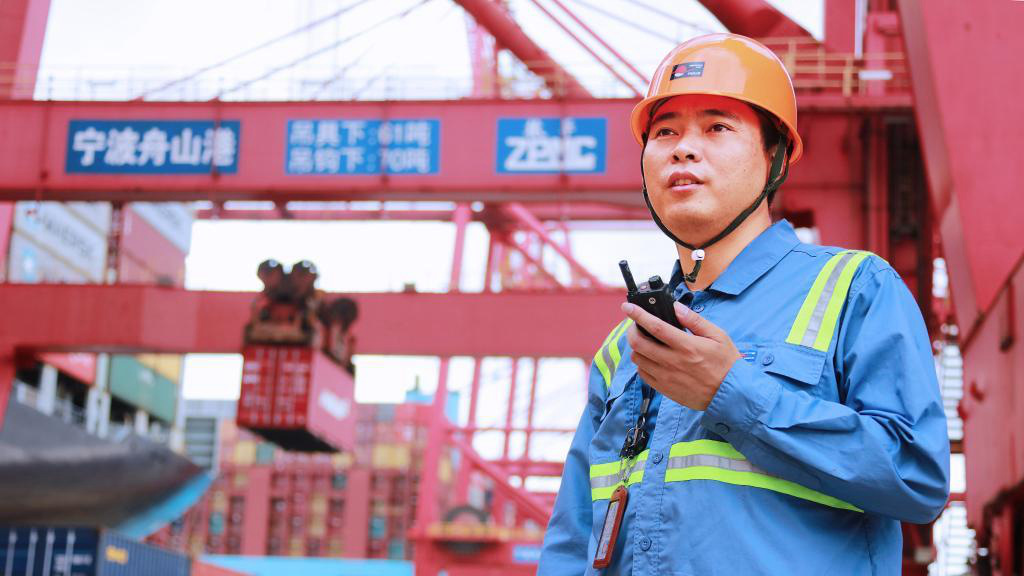
A worker at a port in Ningbo, southeast China's Zhejiang Province, April 30, 2021. /Xinhua
A worker at a port in Ningbo, southeast China's Zhejiang Province, April 30, 2021. /Xinhua
Editor's note: Stephen Ndegwa is a Nairobi-based communication expert, lecturer at the United States International University-Africa, author and international affairs columnist. The article reflects the author's opinions, and not necessarily the views of CGTN.
For many countries, there will be little to celebrate about on Labor Day, otherwise known as Workers' Day, the May 1 annual holiday that celebrates the achievements of people who are gainfully employed. Much like in the year 2020, workers cannot wait to put this tumultuous season behind them due to the financial ruin caused by the COVID-19 pandemic.
There is no official theme for this year's Labor Day celebrations, maybe for the world to continue focusing on the 2020 concerns of "maintaining safety and security at the workplace" as a way of raising awareness about the coronavirus pandemic. Work ranks among the top needs of human beings since time immemorial. Without wages or salaries, people cannot afford basic needs like food, shelter, health and education.
Beyond matters of remuneration and working conditions on the shop floors of industries and in the fields, the world of work has undergone a paradigm shift as a result of the pandemic. While two years ago "working from home" seemed a far-fetched idea, this is now emerging as the new normal for jobs that can be performed online.
Still, the pandemic will be over sooner or later, and we will be left with the daunting challenge of trying to get back on track to business as usual amid hitherto compounding factors facing the labor sector. The failing or underperforming of thousands of companies globally has gone down with the hopes and fortunes of millions of people and their dependants. The ripple effect has led not only to an economic crisis, but to a social crisis as well.
Due to financial constraints, companies have given up vast leases and drastically reduced office spaces in order to curb increasing losses. In addition to the drastic reduction of staff numbers, those who do not need to be physically present in an office setting may never need the formality any more.
Furthermore, lockdowns and curtailment of movement since last year have shown that virtual meetings and even work can be effectively performed on virtual platforms on a large scale. But the jury is still out on the extent to which this modus operandi will replace the previous physical arrangements.

A worker installs safety net over a sewer manhole in Nanjing City, east China's Jiangsu Province, May 1, 2021. /CFP
A worker installs safety net over a sewer manhole in Nanjing City, east China's Jiangsu Province, May 1, 2021. /CFP
Even before the pandemic, the relentless growth in the automation of various functions and processes by robots and Artificial Intelligence was already a growing threat to human intelligence. For instance, an analysis by Oxford Economics published in June 2019 stated that an estimated 20 million manufacturing jobs around the world could be replaced by robots by 2030. By the time of the report, about 1.7 million manufacturing jobs had already been lost to robots since the year 2000, including 260,000 in the U.S., 400,000 in Europe and 550,000 in China.
The report projected a dead end for labor saying that "workers who move out of manufacturing, tend to get new jobs in transport, construction, maintenance, and office and administration work - which in turn are vulnerable to automation."
Human resource experts warn that jobs that are on the line in the next ten years include low efficiency and repetitive ones like travel agents, taxi drivers, store cashiers, fast food cooks and administrative jobs. The ones that are not fading away soon are mainly those that require creativity and empathy including lawyers, HR, tradespeople, information and communication technology systems analysts and medical professionals.
But that's exactly the point. Jobs that hold the bulk of the world's labor force are in jeopardy due to technological advances. Absorbing the millions of workers who will gradually be laid off is the emerging dilemma for both private and public sectors. It will definitely need massive investment to cushion redundant workers through social welfare during the transition period, and in skills retraining so they can adapt to new roles.
However, all is not gloom. For example, women have made substantial progress on several fronts in a world dominated by male workers both in developed and developing countries. There are still challenges to be met and gaps to be filled in bridging the gender gaps in numbers and pay, but the positive trend to equality cannot be ignored.
There is a new normal taking shape post COVID-19. It behoves both employers and employees to come up with both short-term and long-term strategies to ride out the inevitable wave of change. Definitely, the biggest burden falls on governments who must lead in policy formulation, implementation and enforcement where necessary.
Significantly, it is also a time for workers' unions to reassert themselves as the gap between the owners of capital and the working class widens. The fight for minimum wages, safe workplaces, job security and comfortable retirement is a constant struggle.
(If you want to contribute and have specific expertise, please contact us at opinions@cgtn.com)

